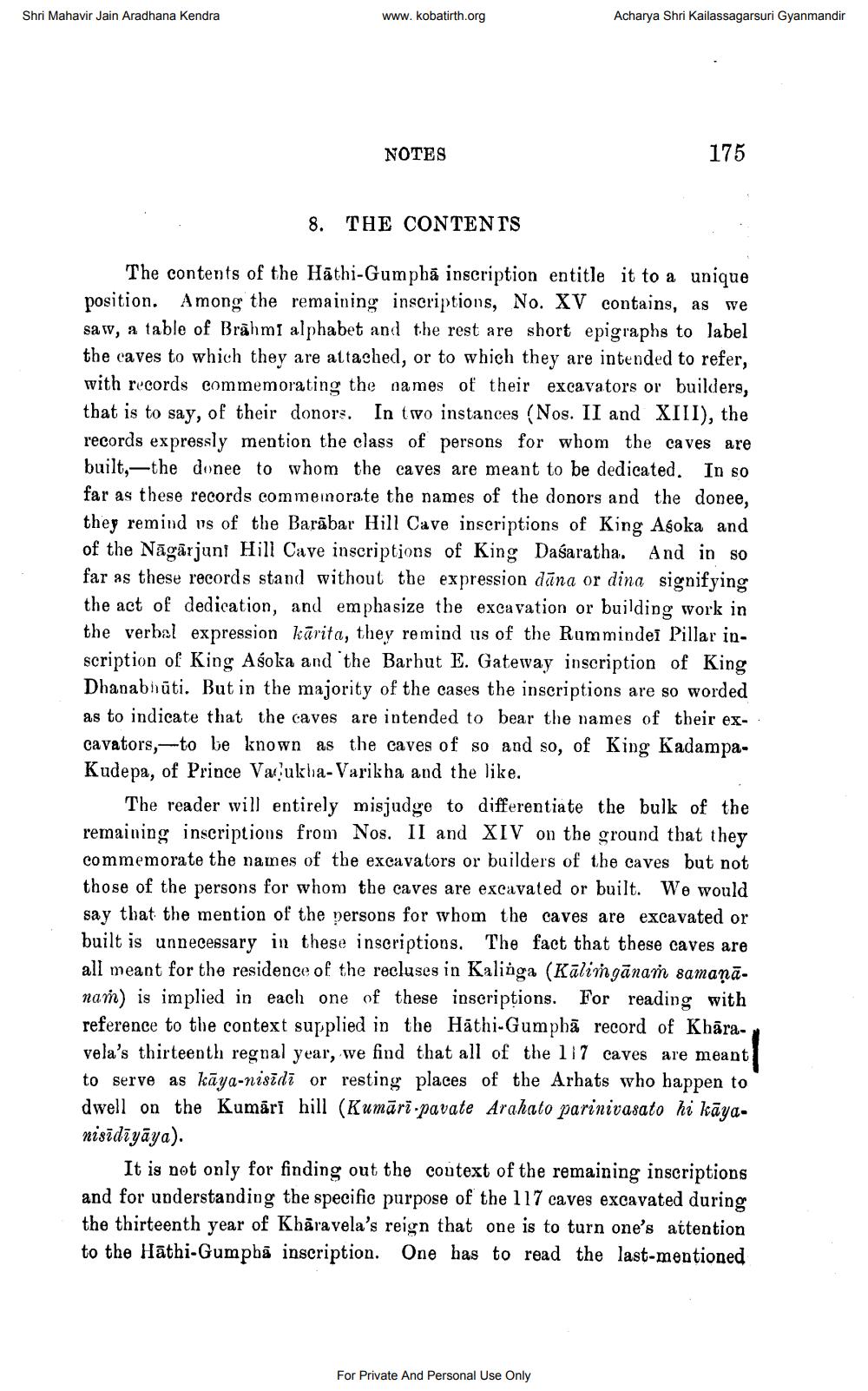________________
Shri Mahavir Jain Aradhana Kendra
www.kobatirth.org
NOTES
8. THE CONTENTS
Acharya Shri Kailassagarsuri Gyanmandir
175
The contents of the Hathi-Gumpha inscription entitle it to a unique position. Among the remaining inscriptions, No. XV contains, as we saw, a table of Brahmi alphabet and the rest are short epigraphs to label the caves to which they are attached, or to which they are intended to refer, with records commemorating the names of their excavators or builders, that is to say, of their donors. In two instances (Nos. II and XIII), the records expressly mention the class of persons for whom the caves are built, the donee to whom the caves are meant to be dedicated. In so far as these records commemorate the names of the donors and the donee, they remind us of the Barabar Hill Cave inscriptions of King Asoka and of the Nagarjunt Hill Cave inscriptions of King Dasaratha. And in so far as these records stand without the expression dana or dina signifying the act of dedication, and emphasize the excavation or building work in the verbal expression karita, they remind us of the Rummindei Pillar inscription of King Aśoka and the Barhut E. Gateway inscription of King Dhanabhūti. But in the majority of the cases the inscriptions are so worded as to indicate that the caves are intended to bear the names of their excavators, to be known as the caves of so and so, of King KadampaKudepa, of Prince Vadukha- Varikha and the like.
The reader will entirely misjudge to differentiate the bulk of the remaining inscriptions from Nos. II and XIV on the ground that they commemorate the names of the excavators or builders of the caves but not those of the persons for whom the caves are excavated or built. We would say that the mention of the persons for whom the caves are excavated or built is unnecessary in these inscriptions. The fact that these caves are all meant for the residence of the recluses in Kalinga (Kaliṁgānam samaṇānam) is implied in each one of these inscriptions. For reading with reference to the context supplied in the Hathi-Gumpha record of Kharavela's thirteenth regnal year, we find that all of the 117 caves are meant to serve as kaya-nisīdī or resting places of the Arhats who happen to dwell on the Kumari hill (Kumari pavate Arahato parinivasato hi kayanisīdīyāya).
For Private And Personal Use Only
It is not only for finding out the context of the remaining inscriptions and for understanding the specific purpose of the 117 caves excavated during the thirteenth year of Kharavela's reign that one is to turn one's attention to the Hathi-Gumpha inscription. One has to read the last-mentioned




